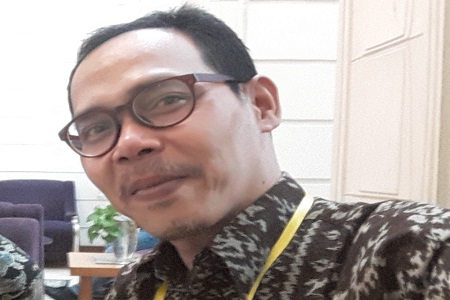From Magic, Dances, to Café: Understanding the Dynamics of Millennial Sufism

At the first Annual International Conference on Social Sciences and Humanities (AICoSH), 25-27 June 2019 at the Ballroom of the New Saphir Hotel, the lecturer of the Sociology Department, Achmad Zainal Arifin, Ph.D., was honored to be one of the speakers. At the seminar, Achmad Zainal Arifin, Ph.D., who serves as the Head of the Sociology Department, presented an interesting theme about the dynamical development of Sufism and tarekat among the young people today. In his presentation, he revealed that the phenomenon of social change particularly those triggered by technological advances have shaped the character of society which is different from the previous generations. Rationality, individuality, and pragmatism which are the main characters of modern society have shifting influenced on the young in motivation and the expression of religiosity. In this regard, he explained that three aspects in tasawuf which are represented in three terms as the title of his presentation are; magic, dances, and café.
The term "magic" is the source of motivation for the young to recite a particulardhikrin hundreds or even thousands a day. Indeed, the term ‘magic’ here is defined as various supernatural powers like invulnerableness in weapons and compassion (attracting others). We can find this motivation in theriyadhohtraditions which are quite familiar inpesantren, particularly in the traditional one. In the context of young notably in urban areas, this kind of motivation phenomenon can still be found, but there is already shifting to more economical. An interesting phenomenon is the emergence of creative ventures which targeting young people who are increasingly eager to show their piety in public.
The term "dances", Achmad Zainal Arifin, Ph.D. said, presents the model ofSufismfor young people who craving something new and not monotonous. TheSufismpractice which has been identified with sitting cross-legged and reciting variousdhikrby shaking his head is seen as not attractive to urban youth. TheWhirling Darvish(spinning dance) introduced by the great Sufi, Jalaluddin Rumi, begins to gain for young people. Despite it is not a new expression, the dance in Indonesia develops widely in the last few years. The emergence of various Islamic recitation activities,sholawatan, and Islamic music in the last decades shows that young people are more concerned with new models in expressing their diversity, including intasawuf.
Finally, the term‘café’becomes an interesting thing which presents how this place is used for asalikto seek his way to God. Instead, this place is identified for business and hangs out. The representation of a mosque ormusholahwhich is often termed ‘zawiyah’ (the place for practicingSufism) seems lost its sacredness for the young people. Some cafes emerged as an alternative implementation of Sufism ‘training’ in big cities such as the Rumi Café in Jakarta. Besides, the emerged phenomenon of ‘Sufi online’ or what is commonly referred to as ‘online allegiance’ led by the Naqshbandi Haqqani representing how virtual space is used to foyer point for people who want to join thethoriqohand get full guidance without having to leave his private room. Of course, this is an adaptation that religious groups should have done in order to attract young people who are already unseparated from technological advances.
